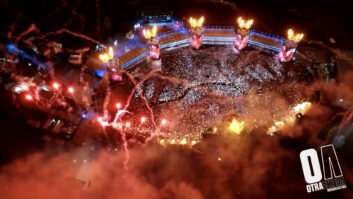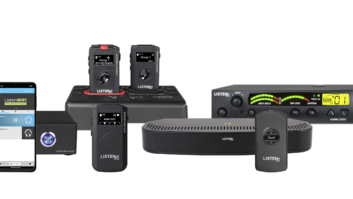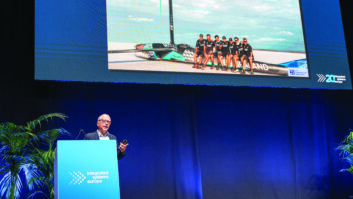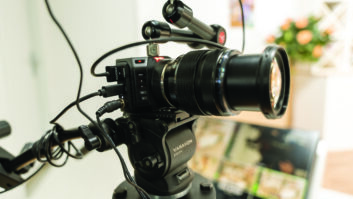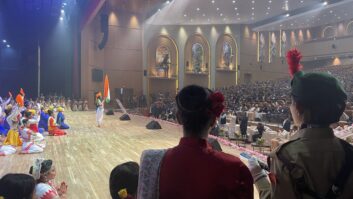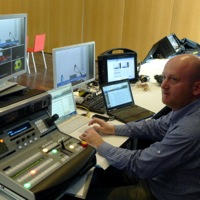
Goethe University in Frankfurt, Germany, recently extended its ‘supercampus’ AV set-up with the introduction of a Blackmagic Design mobile broadcasting solution.
Construction work spanning the last four years has delivered new buildings and technologies for the benefit of the university’s 47,500-student population.
Between 2008 and 2009 the Conference & Media Services Department devised and installed a new broadcasting facility at the university, which enables the whole university to capture, edit and distribute audiovisual material, both internally to students, staff and visitors, and also externally.
The AV infrastructure runs over the Crestron Digital Media platform, comprising two DM-MS 16×16 matrixes. This provides the campus with over 50 fully networked rooms, each offering Crestron control via 26in touch panels to operate the system, DVPHD and the 8×8 Digital media matrix. The integrated recording solution uses MediaSite RL from Sonic Foundry, which provides the webcasting and video content management platform.
“We have eight large lecture halls and 25 seminar rooms that are permanently fitted with recording equipment,” comments Shane Duggan, part of the university’s integrator partners, Medientechnik group.
However, due to the university’s century-old existence, the Mediatechnik group encountered an issue with some campus buildings not being suited to the AV technology era.
“We have two buildings currently – and are about to get a third and fourth building – that are brand new and have all the AV infrastructure/equipment built in. But like every university, this isn’t a greenfield site – some of the buildings here date back to the 1930s and, of course, with buildings like that it’s just not realistic [to install a permanent broadcasting suite] because of planning issues surrounding the buildings and, if nothing else, the time and cost it would take to rewire all of them.”
A mobile solution was subsequently devised to serve the broadcasting black spots, where lectures, seminars and important broadcast-grade content were to take place.
The system is built around a Blackmagic Design ATEM 1 M/E Production Switcher fed by a set of five Panasonic AG AF101 HD video cameras. Output from the ATEM 1 M/E Production Switcher is passed to Sonic Foundry’s MediaSite web casting and recording platform for later playout and streaming of the lectures.
A wide range of ancillary devices can be connected to the solution to allow pre-prepared lecture material and the output from educational equipment such as microscopes to be integrated into presentations.
“We’ve also built a TV studio into the recording chain – just before the recorder – and that allows us to remotely manage the system over the network and we can put in lower thirds,” explains Duggan. “If the lecturer wants to put in a specific point [graphic] or a specific piece of information we can do it remotely from our office as it’s looped into the video matrix. This is a very convenient and cost-effective way of doing things.”
Live production and cutting of the individual sources is handled within the ATEM 1 M/E, with graphic design work carried out in Photoshop and loaded directly into the ATEM media pool.
Set-up of the mobile solution is said to be quick, while an internal multi-viewer enables the display of all sources on a single monitor so that the university’s operator can readily observe feeds and instruct camera operators. The device’s feature set also includes upstream and downstream chroma, pattern and linear keyers, extensive digital video effects, graphic wipes and stinger transitions. Moreover the recording solution is housed in a flight case, making it small enough to fit in to almost any location.
“Along with the impressive features and outstanding quality of the system, we have been able to introduce a truly broadcast-grade solution for the fraction of the price that other systems would cost,” finished Duggan. “Blackmagic Design has allowed us to bring this technology onto campus and to achieve a greater level of production values than we would otherwise have been able to do. This has been achieved over a timescale spreading over the past year and to a cost that is within the scope of the university’s audiovisual budget. The equipment has performed to a level greater than our initial expectation for a system of this sort of cost and we are now looking at more Blackmagic products to extend the scope and capability of the department.”
